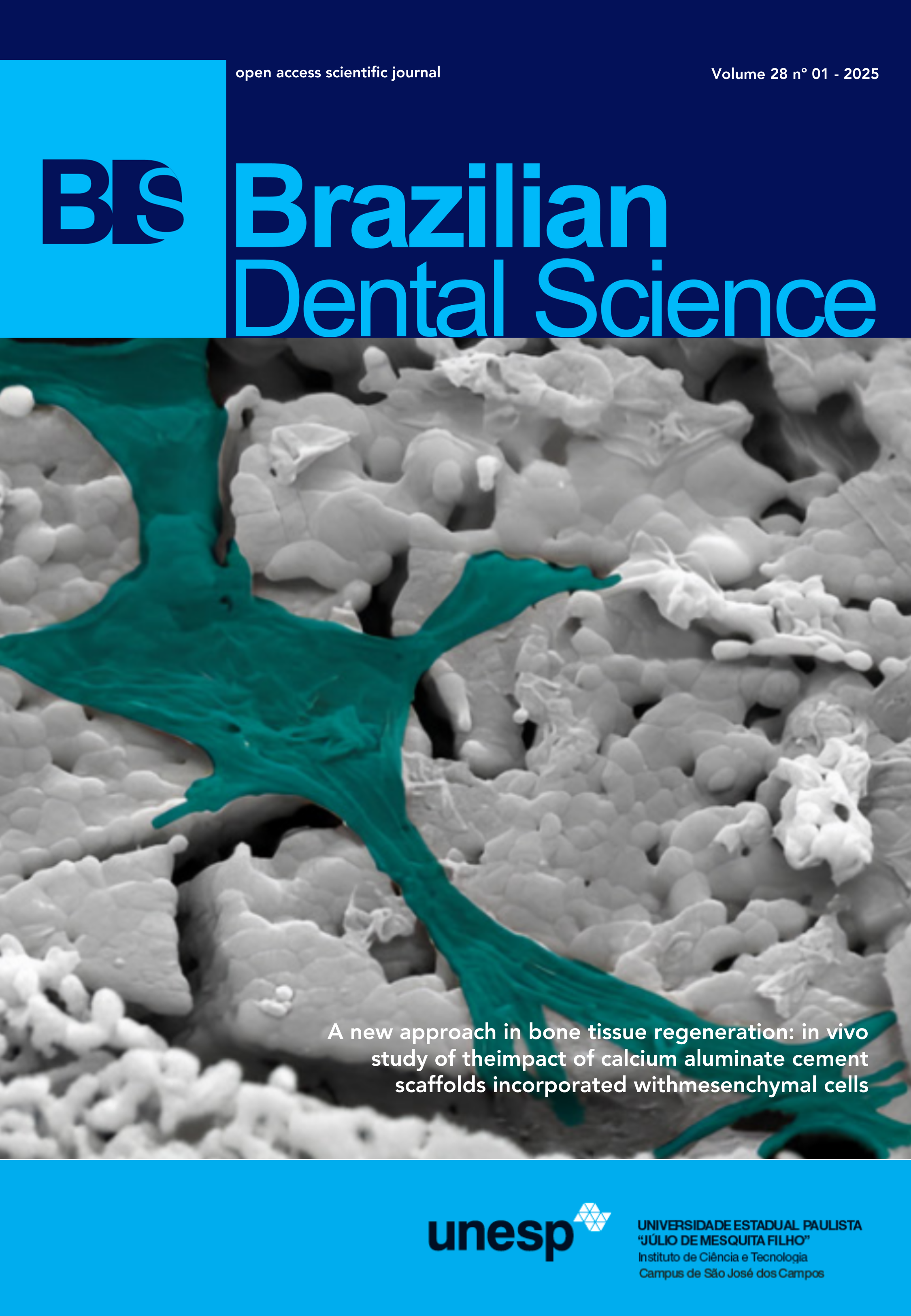Physicochemical properties analysis of experimental retrograde filling materials
DOI:
https://doi.org/10.4322/bds.2025.e4277Resumo
Objetive: To evaluate radiopacity, setting time, flowability, pH, ions release and volumetric change of four experimental endodontic repair cements, MTA white and MTA Repair HP Angelus. The experimental tricalcium cement groups were composed of zirconia oxide or calcium tungstate as a radiopacifier associated to calcium phosphate, the vehicle tested composed by 80% distilled water and 20% arnica extract. Also, the other two experimental consisted of an association of polydimethylsiloxane to tricalcium silicate and same radiopacifiers. Material and Methods: Radiopacity, flow, and setting time tests were done according to ISO 6876 and ASTM C266/2008 specifications. pH was determined with a calibrated pH meter. The ions calcium release was carried out by an atomic absorption spectrophotometer. Volumetric change was assessed by micro-computed tomographic imaging before and after 28 days of immersion in ultrapure water. One-way ANOVA followed by Tukey’s test (alpha=0.05) was performed for pH, setting time and flow rate. Kruskal-Wallis test, followed by Dunn’s test (alpha=0.05), were performed for radiopacity, ions release and volumetric change. Results: All experimental cements presented radiopacity above 3 mm/Al (p < 0.05). Polydimethylsiloxane experimentals showed a higher flow rate (p < 0.05) and better dimensional stability (p < 0.05). Calcium silicate cements resulted in more favorable properties such as alkalinization, longer working time and higher ions release (p < 0.05), though more significant volumetric loss. Conclusion: polydimethylsiloxane experimental cements presented greater flow and dimensional stability, the addition of tricalcium silicate was not able to enhance calcium release nor perform a favorable pH.
KEYWORDS
Dental cements; Endodontics; Root repair; Tricalcium silicate; X-ray microtomography.
Downloads
Downloads
Publicado
Como Citar
Edição
Seção
Licença
Copyright (c) 2025 Brazilian Dental Science

Este trabalho está licenciado sob uma licença Creative Commons Attribution 4.0 International License.
TRANSFERÊNCIA DE DIREITOS AUTORAIS E DECLARAÇÃO DE RESPONSABILIDADE
Toda a propriedade de direitos autorais do artigo "____________________________________________________________________" é transferido do autor(es) para a CIÊNCIA ODONTOLÓGICA BRASILEIRA, no caso do trabalho ser publicado. O artigo não foi publicado em outro lugar e não foi submetido simultaneamente para publicação em outra revista.
Vimos por meio deste, atestar que trabalho é original e não apresenta dados manipulados, fraude ou plágio. Fizemos contribuição científica significativa para o estudo e estamos cientes dos dados apresentados e de acordo com a versão final do artigo. Assumimos total responsabilidade pelos aspectos éticos do estudo.
Este texto deve ser impresso e assinado por todos os autores. A versão digitalizada deverá ser apresentada como arquivo suplementar durante o processo de submissão.




























